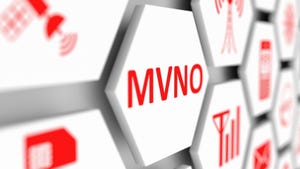Nokia’s cellular network is now ready for the Moon
A mission lander loaded with Nokia’s Lunar Surface Communication System (LSCS) will voyage to the lunar south pole region, where the intention is to deploy the first cellular network on the Moon.
January 7, 2025

Nokia Bell Labs and Intuitive Machines have announced the successful integration of Nokia’s LSCS into the latter’s IM-2 mission lander, called Athena.
After months of testing, engineers installed the LSCS ‘network in a box’ to one of Athena’s upper carbon-composite panels. We’re told multiple precautions were taken during the installation to help ensure that the network will survive the 239,000-mile journey to the Moon, the stresses of take-off and landing, and finally to operate optimally on the lunar surface.
“Each of the 14 mounting points is thermally isolated to keep the network insulated from the extremely low temperatures of deep space,” explains the release. Intuitive Machines also integrated the network into Athena’s Thermal Protection System, which will expel heat when the network is operating, and also supply heat to protect the network when it is idle.
Modules have been installed in two lunar mobility vehicles - namely Intuitive Machines’ Micro-Nova Hopper and Lunar Outpost’s Mobile Autonomous Prospecting Platform (MAPP) rover. Upon landing, the plan is the vehicles deploy on the lunar surface and establish connections to the network based on the Athena lander.
The network uses the same 4G/LTE cellular technology used by devices on Earth, but tweaked to meet the obviously quite different environment of the Moon’s surface. It’s designed to carry high-definition video streaming, command-and-control communications and telemetry data between the vehicles and Athena, and then relay data from the LSCS back to Earth using a direct-to-Earth data transmission service.
This is Intuitive Machines’ second lunar mission, and one of its objectives will be to use the Micro-Nova Hopper and the LSCS to test new sensor instruments that could help find precious resources on the Moon, such as water ice. It is designed to descend into permanently shadowed lunar craters and use sensors to scan for large concentrations of hydrogen, which we’re told are indicative of ice deposits. The data would then be transmitted over the Nokia network to Athena, and relayed back to Earth.
Meanwhile The Mobile Autonomous Prospecting Platform (MAPP) rover, developed by Lunar Outpost, will explore the Moon's south pole region, mapping the lunar surface while collecting stereo imagery and environmental data.
“We intend to prove that cellular technologies can provide the reliable, high-capacity and efficient connectivity needed for future crewed and uncrewed missions to the Moon and eventually Mars,” said Thierry E. Klein, President of Bell Labs Solutions Research at Nokia. “Cellular technology has irrevocably transformed the way we communicate on Earth. There’s no reason it can’t do the same for communications on other worlds.”
Steve Altemus, CEO of Intuitive Machines added: “We believe delivering Nokia’s 4G/LTE system to the lunar surface is a transformative moment in the commercialization of space and the maturity of the lunar economy. We’re taking thoughtful steps to achieve sustainability. Whether it’s Nokia connecting surface assets, or Intuitive Machines’ ability to transmit that data back to Earth and establish lunar data relay satellites, these innovations are mainstay capabilities we believe will define the Artemis generation, and they were initiated through NASA leadership.”
The launch of the Athena lander is targeted for no earlier than late February from NASA’s Kennedy Space Center. For more details on Nokia’s plans for the lunar network, and beyond that wider ambitions for getting to Mars, check out our interview with Thierry Klein, President of Bell Labs Solutions Research, Nokia Bell Labs.
In another release today, Nokia says it now has 7,000 patent families in its stable ‘declared as essential’ to 5G.
Nokia lists areas covered by these patents as 5G radio protocol design, 5G security, and interface technologies “that define how smartphones, connected cars and other connected devices interact with 5G networks.”
The kit vendor boasts that its patent portfolio is built on more than €150 billion invested in R&D and standardization since 2000, and is composed of over 20,000 patent families.
Any device that connects to a cellular network uses Nokia’s patented technology, we’re told, and over 250 companies have secured a license to its tech. “These technologies are the essential building blocks for entire industries,” claims Nokia, highlighting mobile devices, consumer electronics, connected vehicles, IoT devices and solutions, and video streaming.
“Nokia’s substantial investment in cellular R&D and standardization continues to pay off,” said Patrik Hammarén, Acting President of Nokia Technologies. “We have now reached the landmark of 7,000 high-quality patent families declared as essential to the 5G standard and Nokia's active pre-standardization work puts us in a leading position for 6G standardization which begins later this year. Thanks to all the Nokia inventors and our patenting professionals for their hard work and problem-solving. Together they continue to help Nokia maintain its technology leadership and drive cellular innovation forward.”
Last year Nokia announced it had done a deal with Huawei's smartphone spin-off Honor that covers both companies' inventions relating to 5G and other cellular technologies.
"We are delighted to have concluded an amicable patent cross-license agreement with Honor, one of the leading players in the Chinese smartphone market," said Susanna Martikainen, chief licensing officer, mobile devices, at Nokia at the time.
Of course it not always about harmonious cooperation when it comes to tech patents. Also last year it was reported Amazon was suing Nokia for patent infringement, the latter having initiated legal action against the former the previous year, with Nokia Chief Licensing Officer Arvin Patel saying in a blog at the time the kit vendor had: “commenced legal action against Amazon for the unauthorized use of Nokia’s video-related technologies in its streaming services and devices.”
About the Author
You May Also Like










.png?width=300&auto=webp&quality=80&disable=upscale)


_1.jpg?width=300&auto=webp&quality=80&disable=upscale)